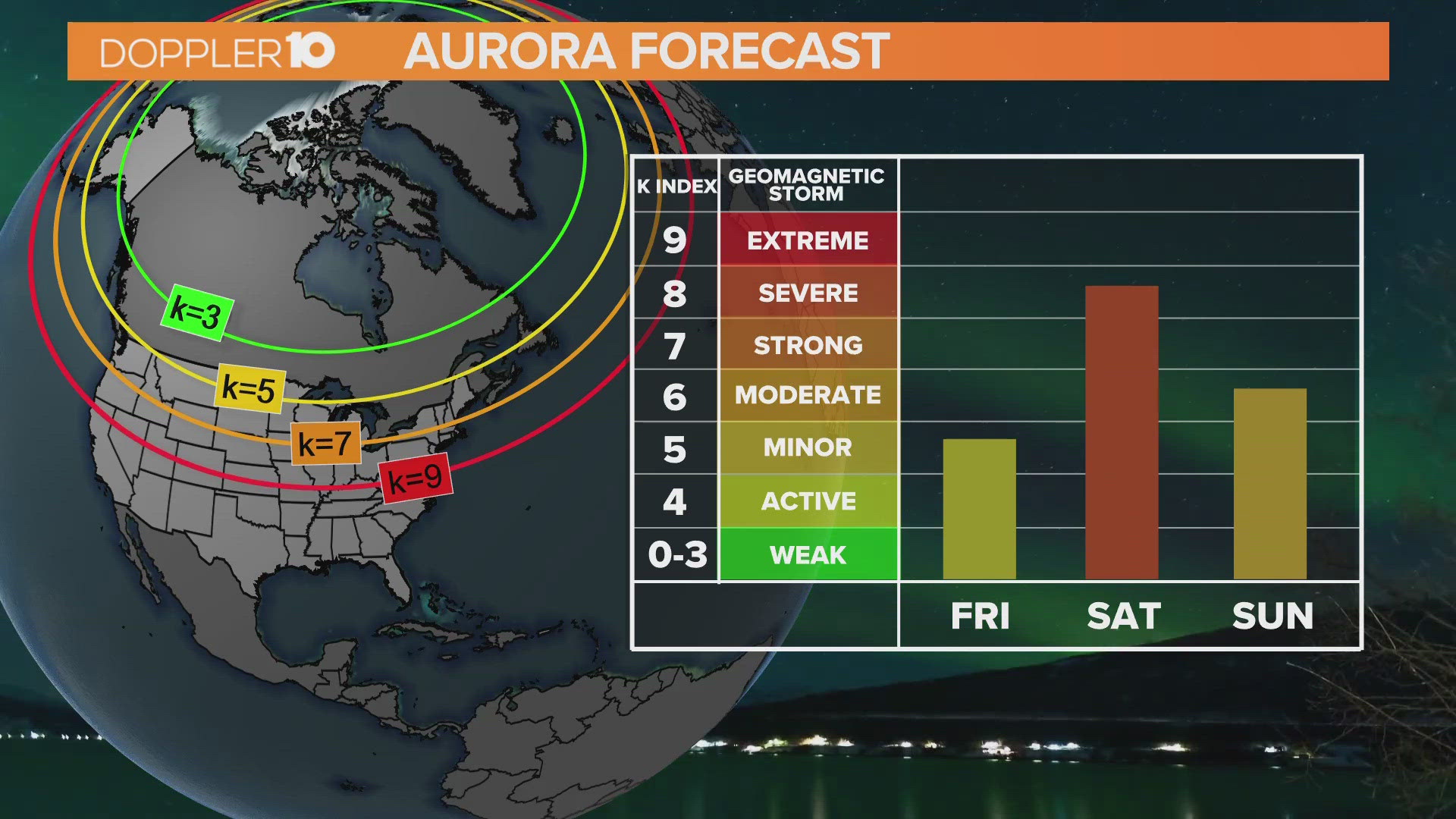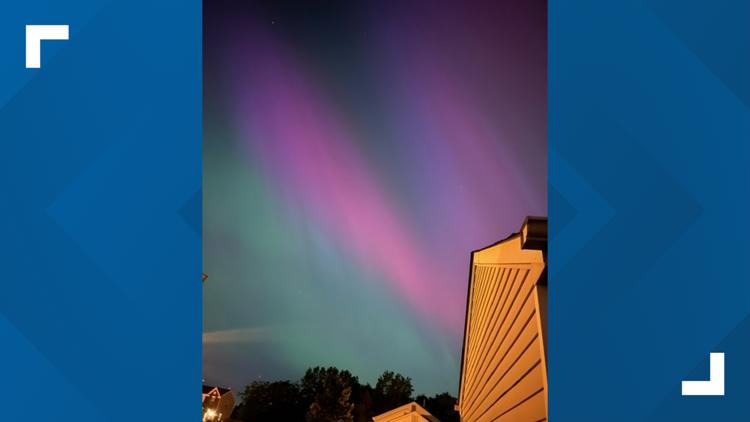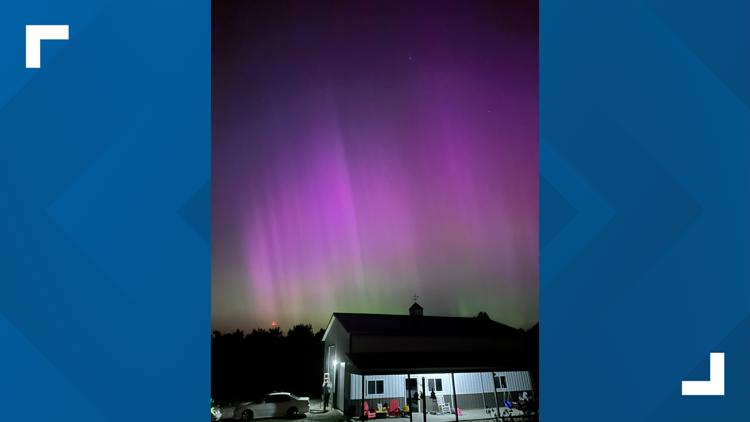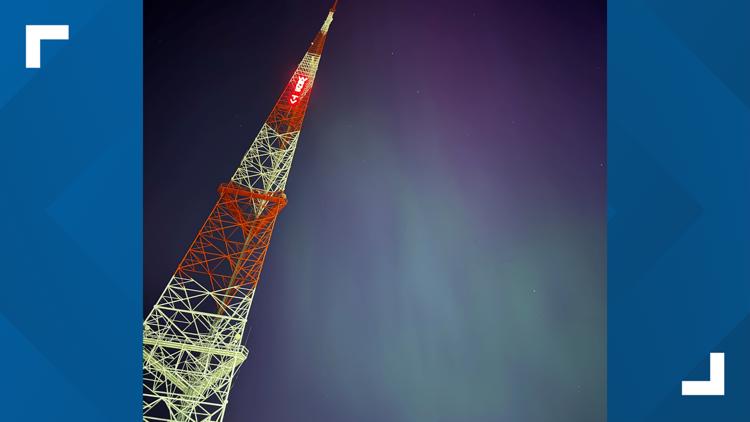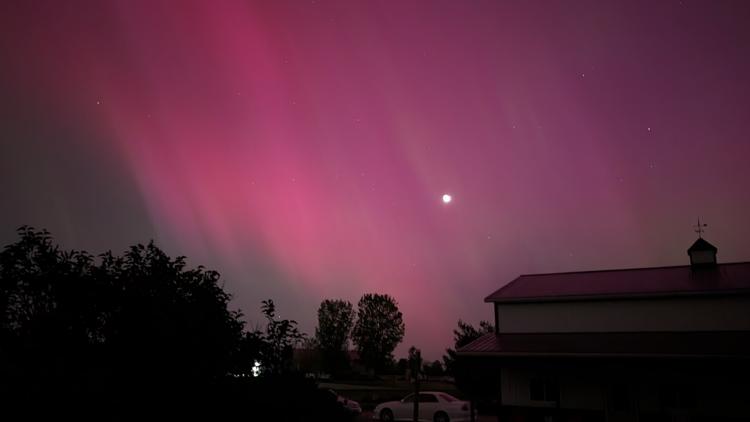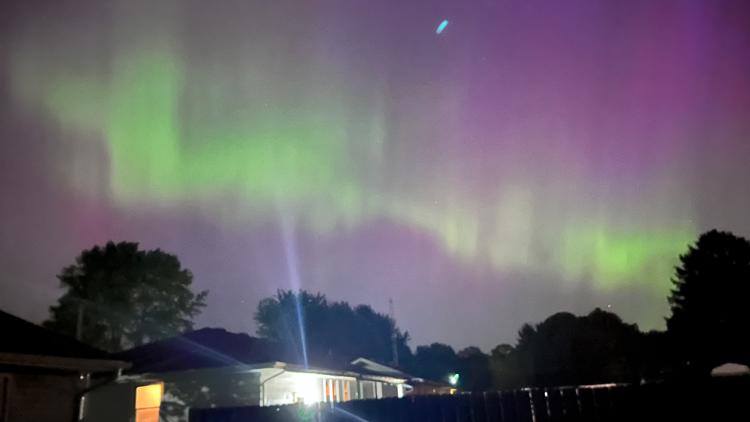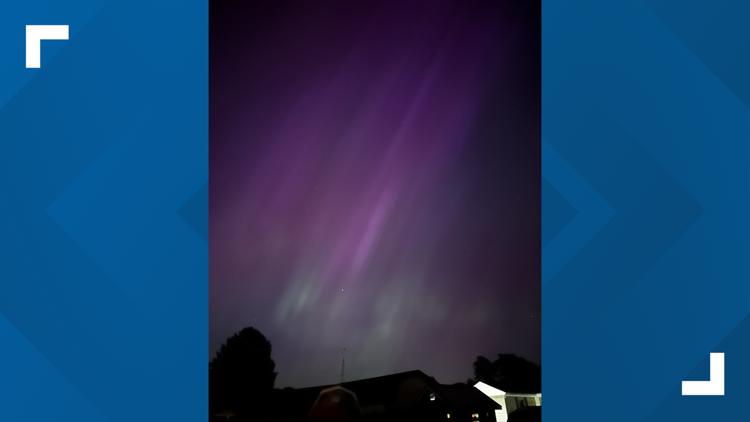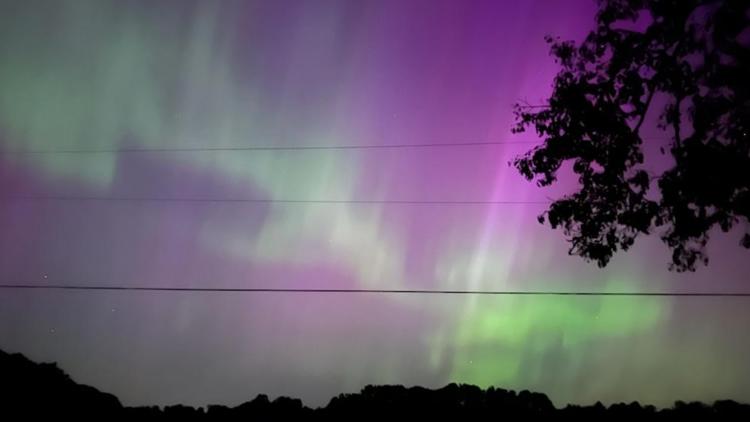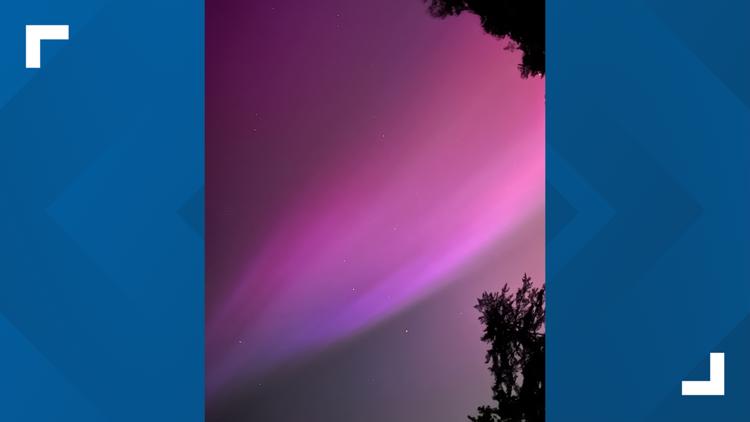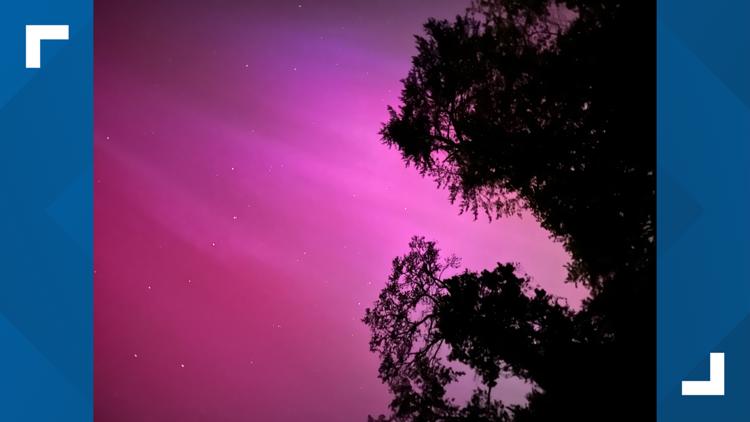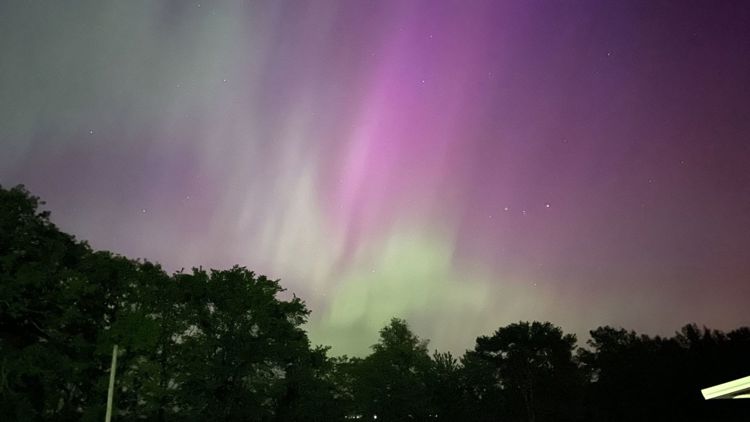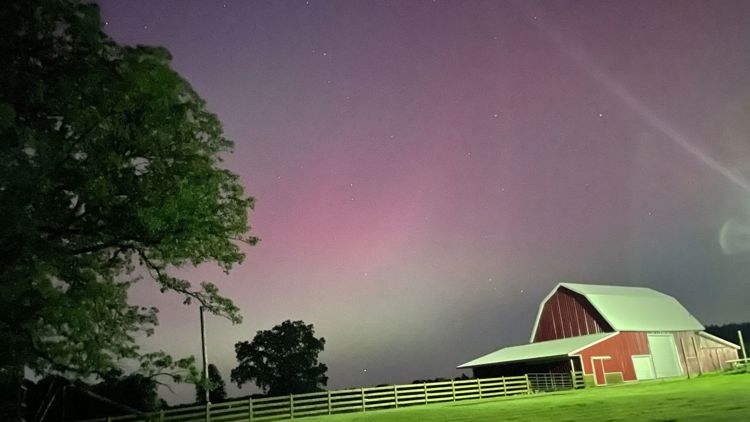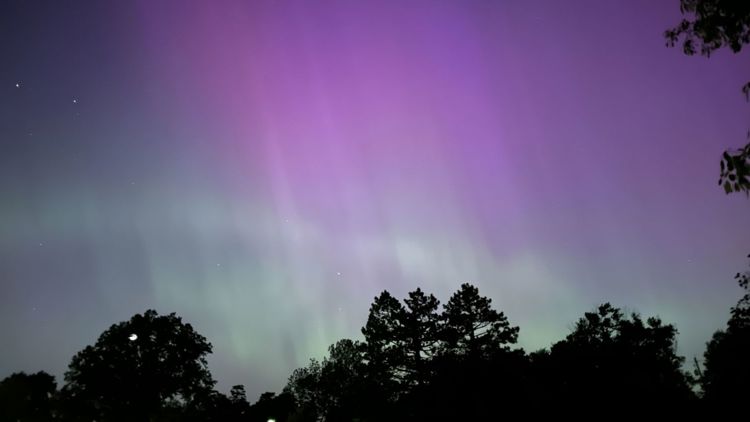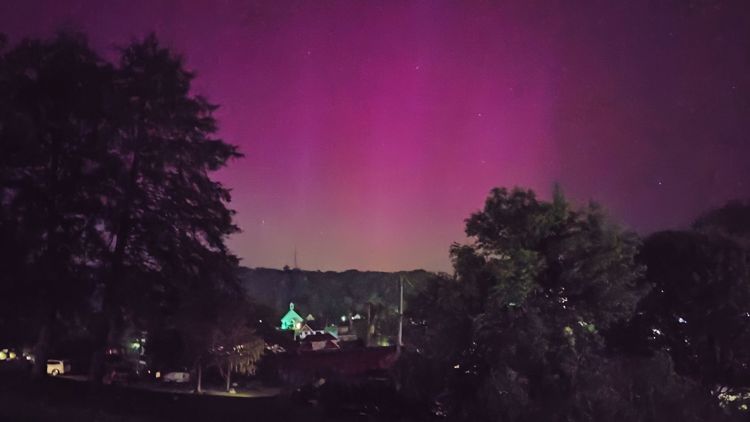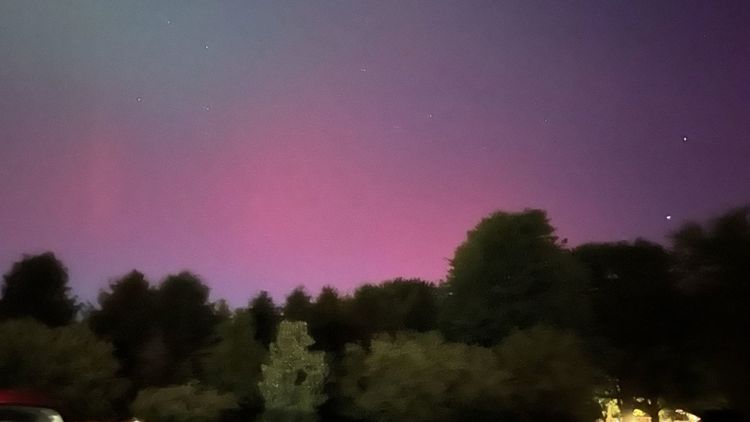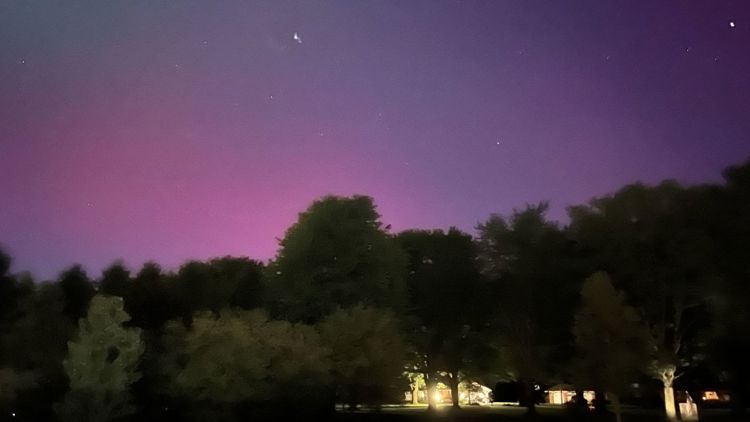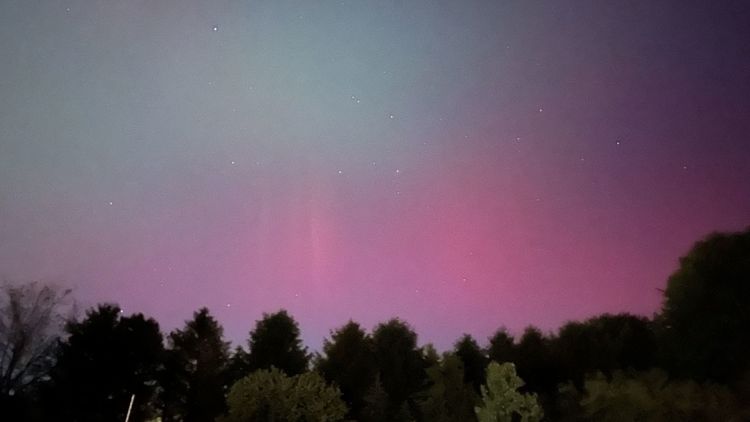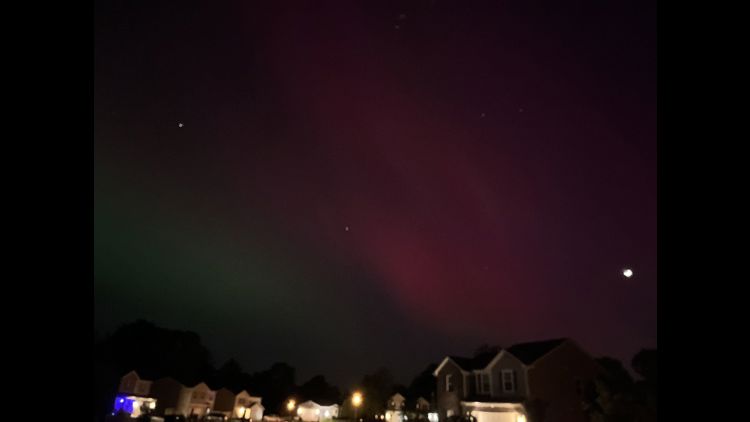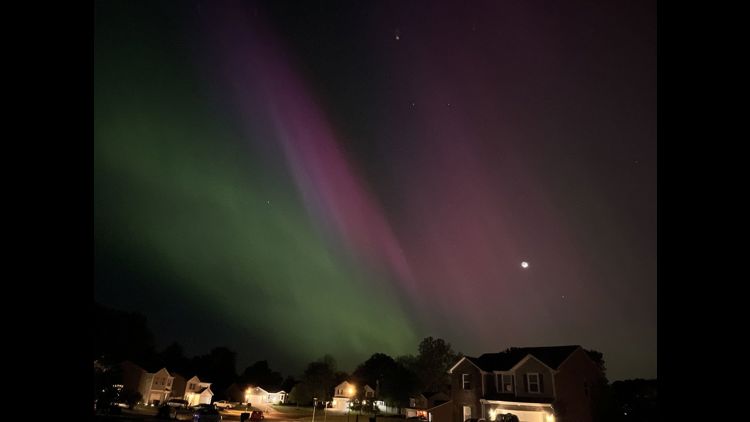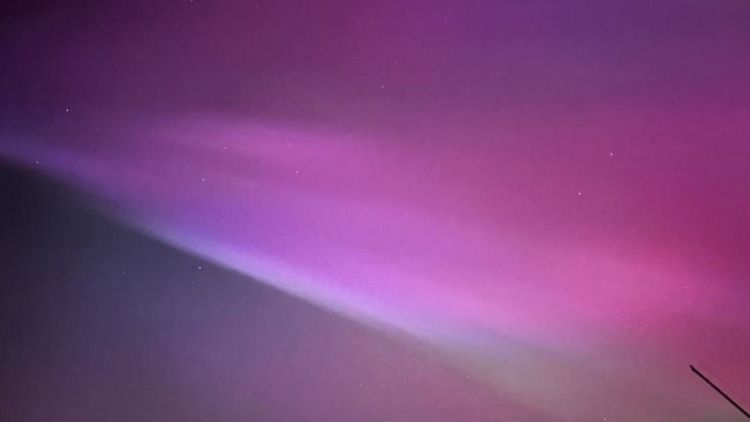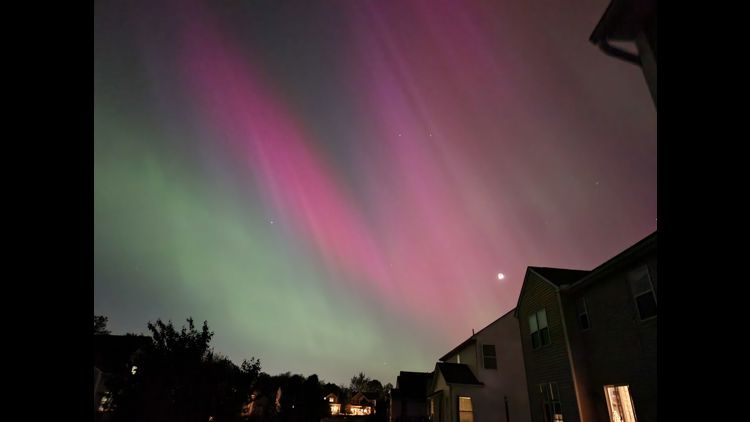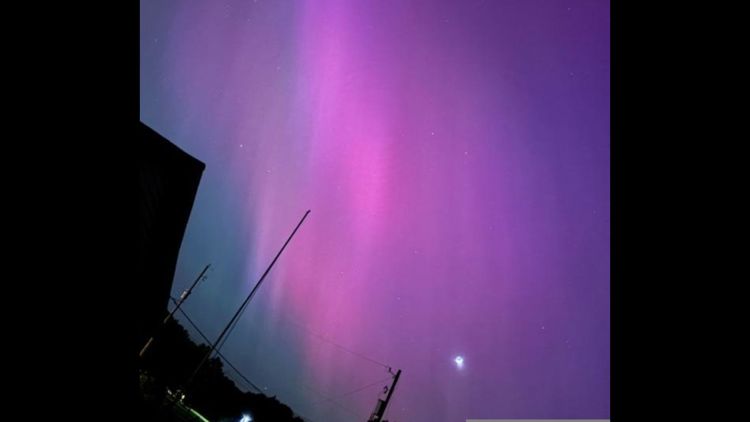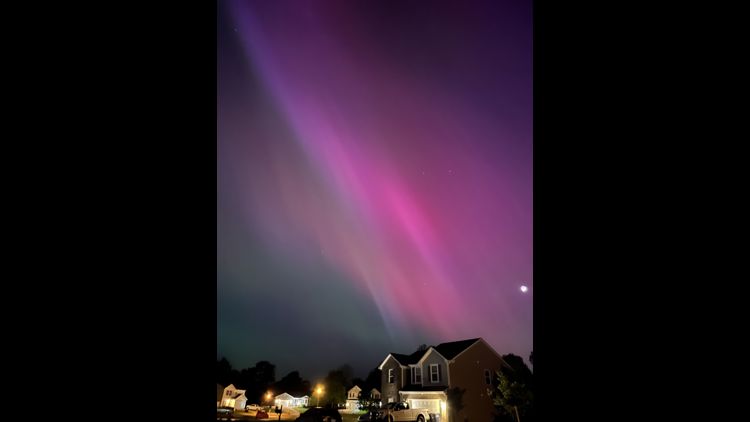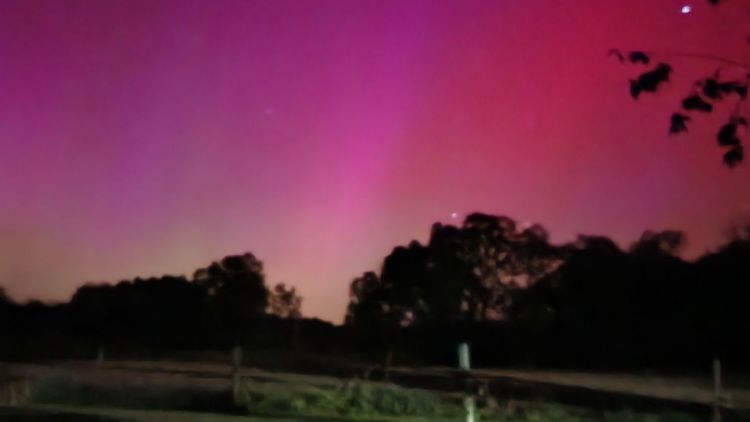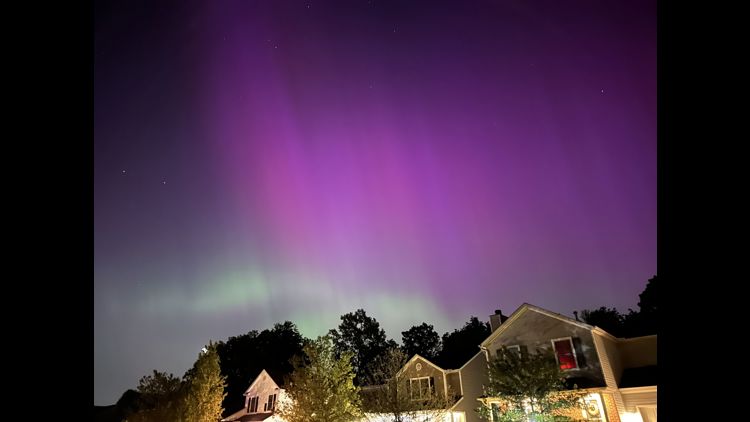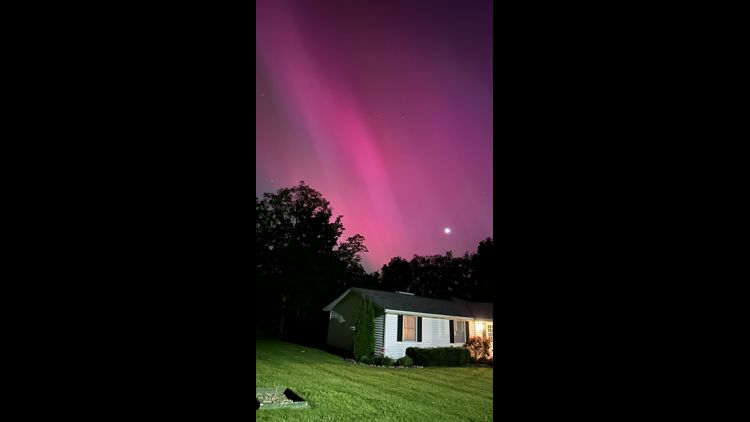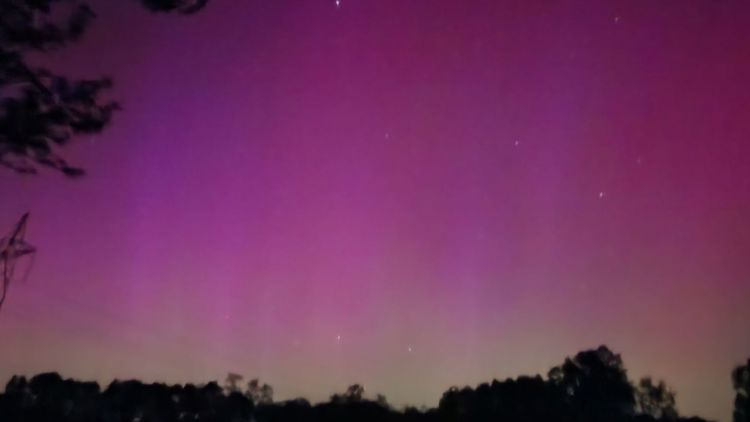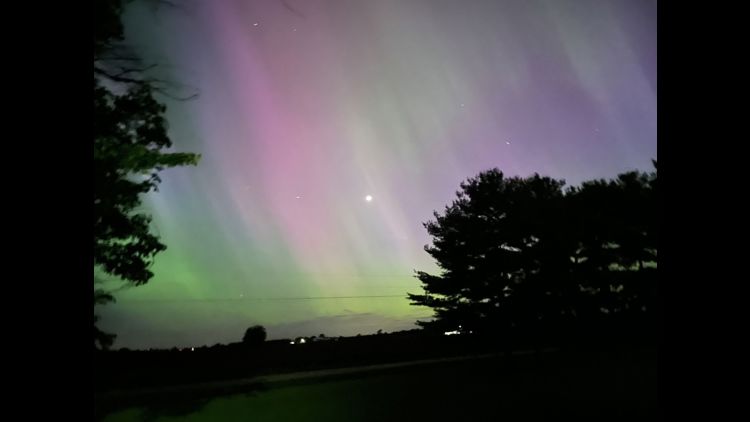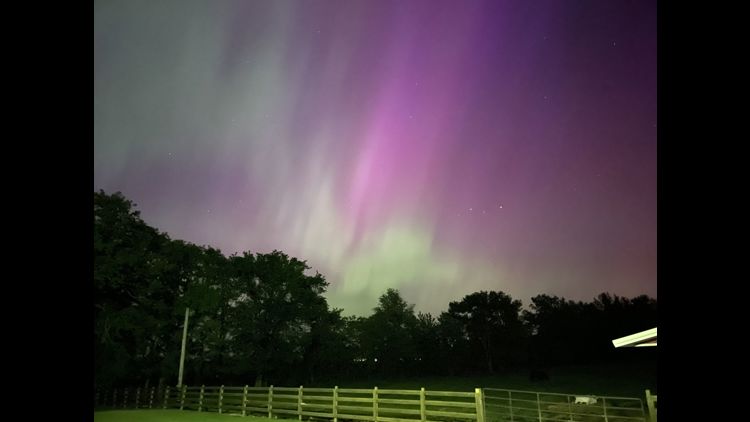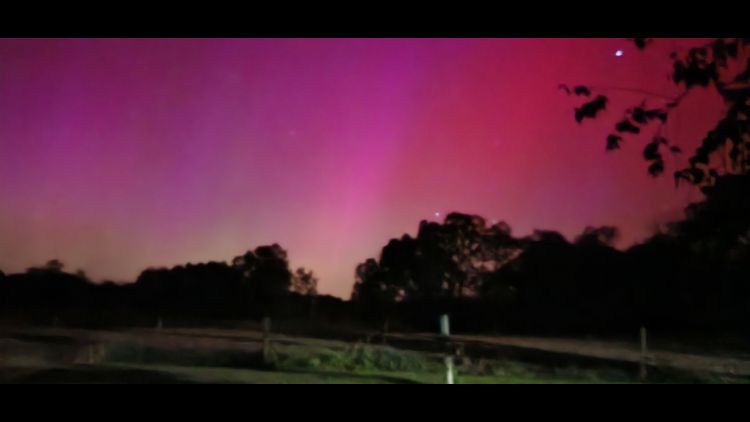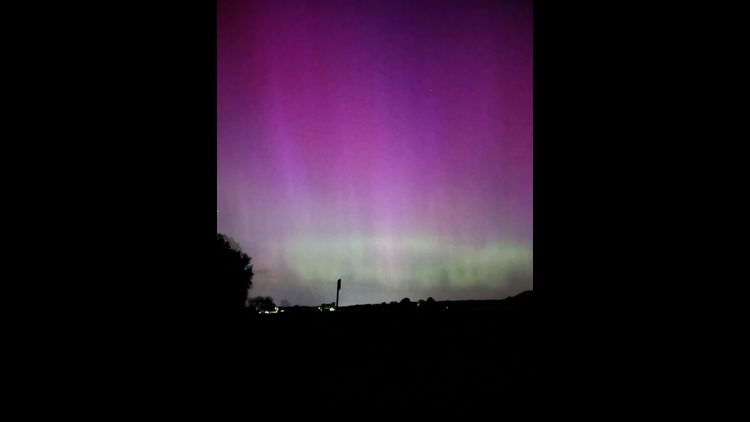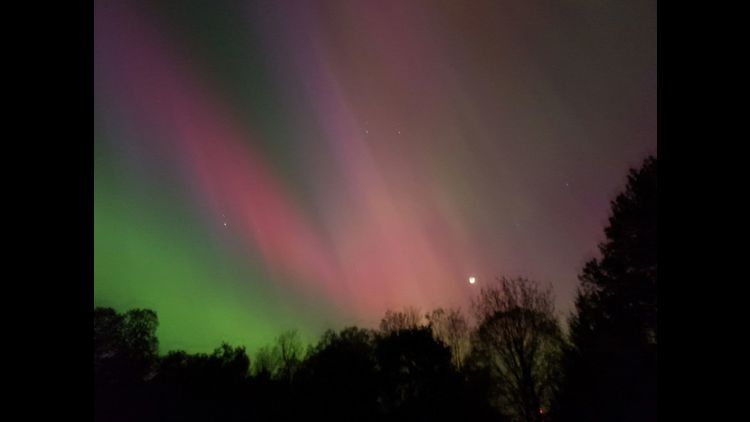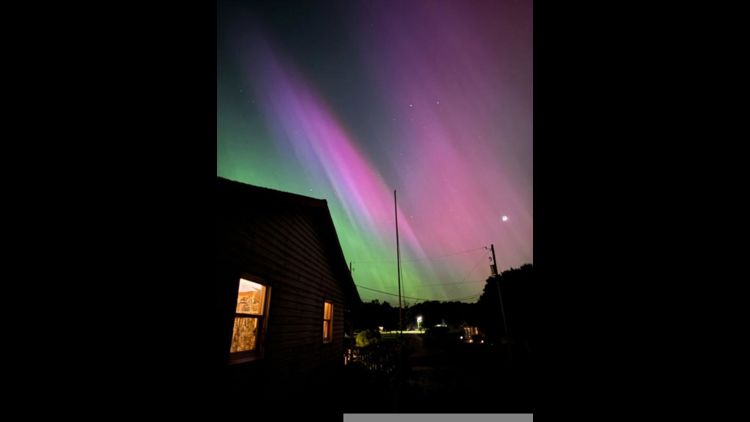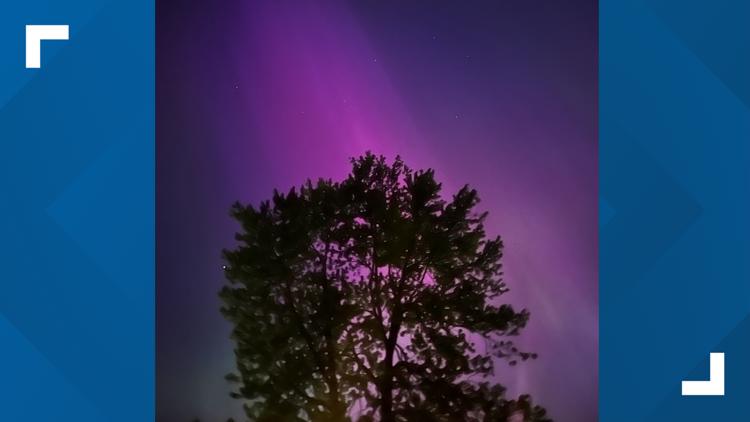COLUMBUS, Ohio — If you didn't get to see the northern lights in Ohio Friday night, there may be another opportunity for you to see them tonight.
Across the state, people stayed up to watch beautiful displays of green, pink and blue lights. The event was the result of a strong geomagnetic solar storm.
The National Oceanic and Atmospheric Administration said the storm watch was moved from "moderate" to "severe" Friday night. The last time a severe warning was issued was in 2005.

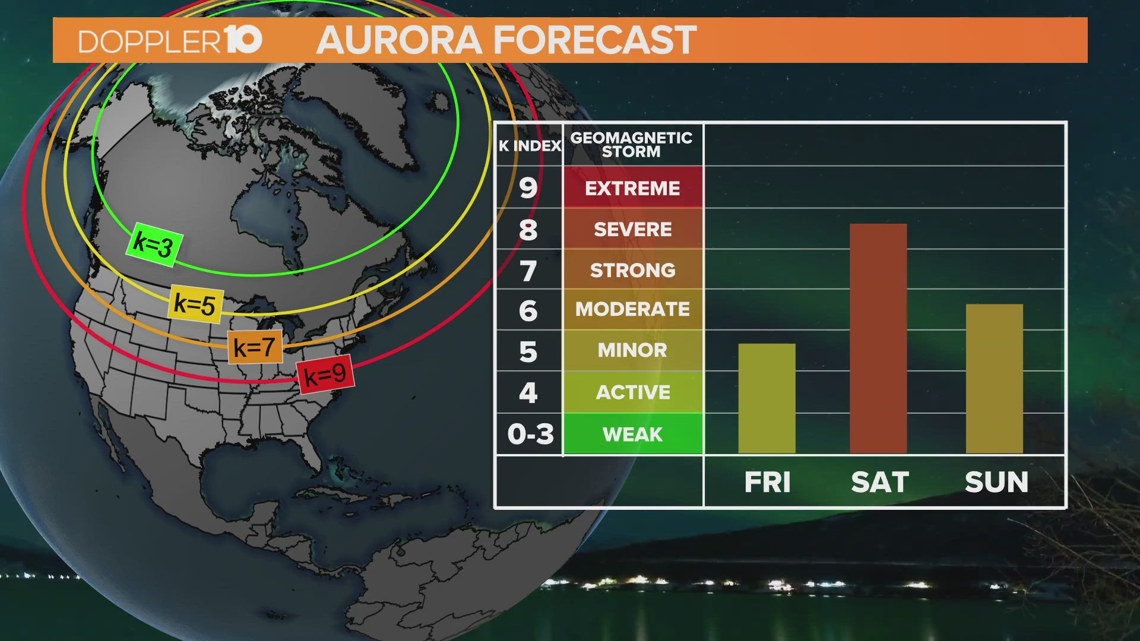
A geomagnetic solar storm watch is a warning from NOAA about potential activity on the sun's surface that could send waves of high-energy particles shooting toward the earth. When these particles hit the planet, they have the ability to mess with satellite communication systems, cause GPS problems and prevent high-frequency radios from working.
NOAA said the sun produced strong solar flares on Wednesday, resulting in five outbursts of plasma capable of disrupting satellites in orbit and power grids here on Earth. Each eruption — known as a coronal mass ejection — can contain billions of tons of solar plasma.
On Friday night, the particles reached Earth, generating the northern lights.
The Space Weather Prediction Center uses a "K-index," ranging from zero to nine, to describe the impact a solar event has on Earth's magnetic field.
Normally, on the storm index, we would have to see an eight or nine to have the potential for the lights. Saturday night into Sunday morning we're watching for the potential of the K-index reaching five or six, which could give us some glimpses of the aurora in northern Ohio.
It's rare for such a strong solar storm to hit the earth, and they're unpredictable, meaning it could be years before anything like this happens again — and it may be even longer before a solar storm peaks at night, which makes viewing the northern lights much easier.
The best views of the aurora came from phone cameras, which proved better at capturing light than the naked eye.

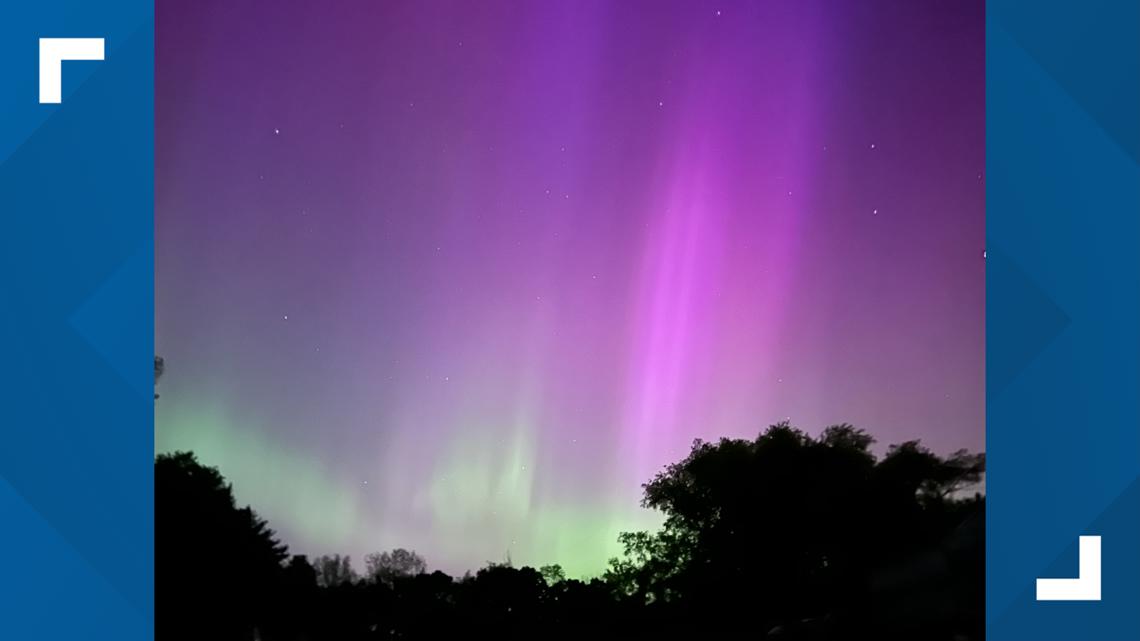
When will you be able to see the northern lights?
According to the Space Weather Prediction Center, the best aurora is usually within an hour or two of midnight (between 10 p.m. and 2 a.m.). These hours of active aurora expand towards evening and morning as the level of geomagnetic activity increases.
The northern lights should appear as a faint greenish glow which may appear to dance as it gets more active. Occasionally, other colors such as pink or red, will also be visible.
Whether we may be able to catch a glimpse of the lights again depends on the location and the weather. Those to the north may have a better chance of seeing any lights Saturday.
We'll see some rain throughout the day with plenty of clouds, if those clouds don't clear, they could block the chance of seeing the northern lights. Get your full weather forecast here.

